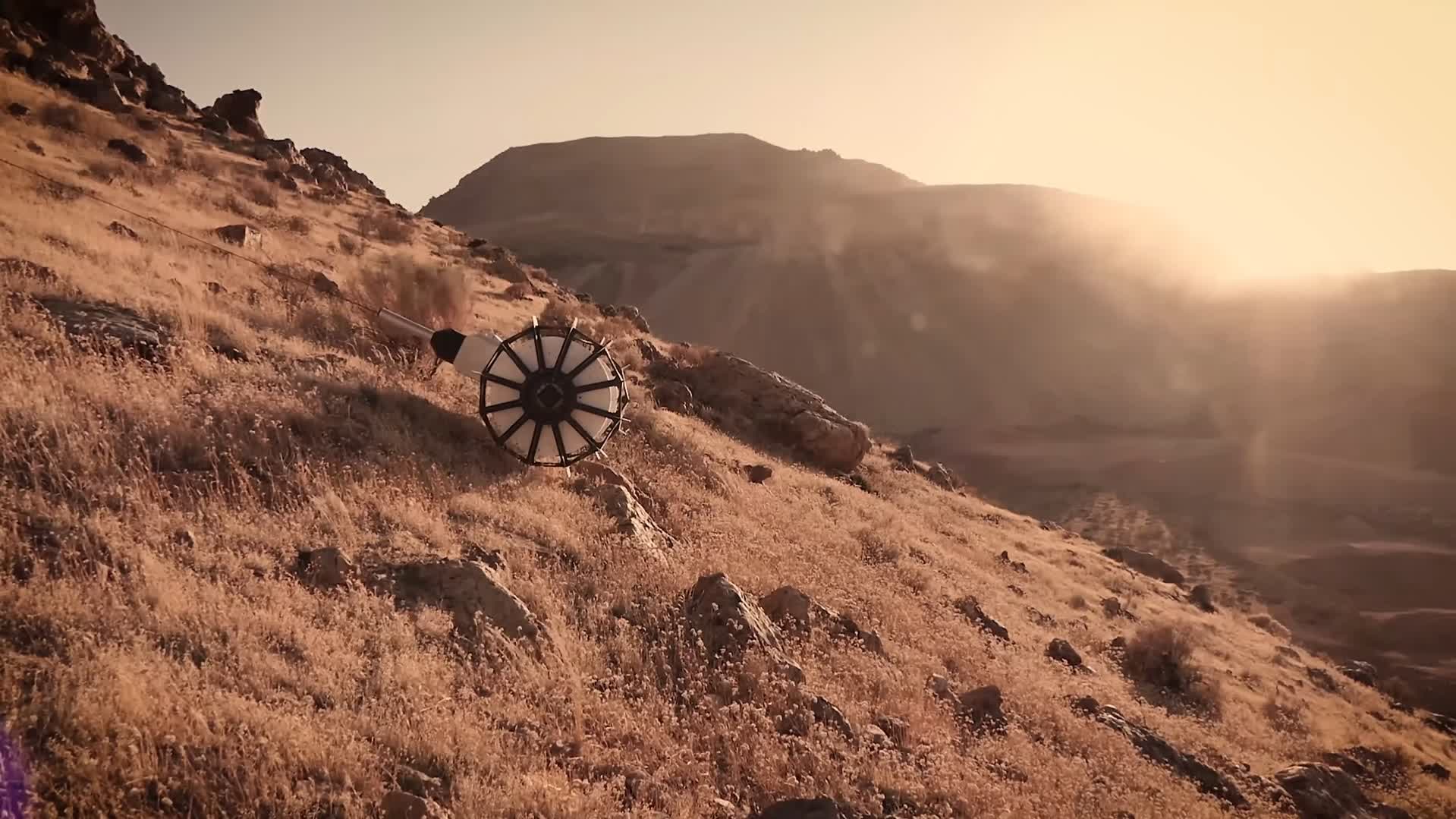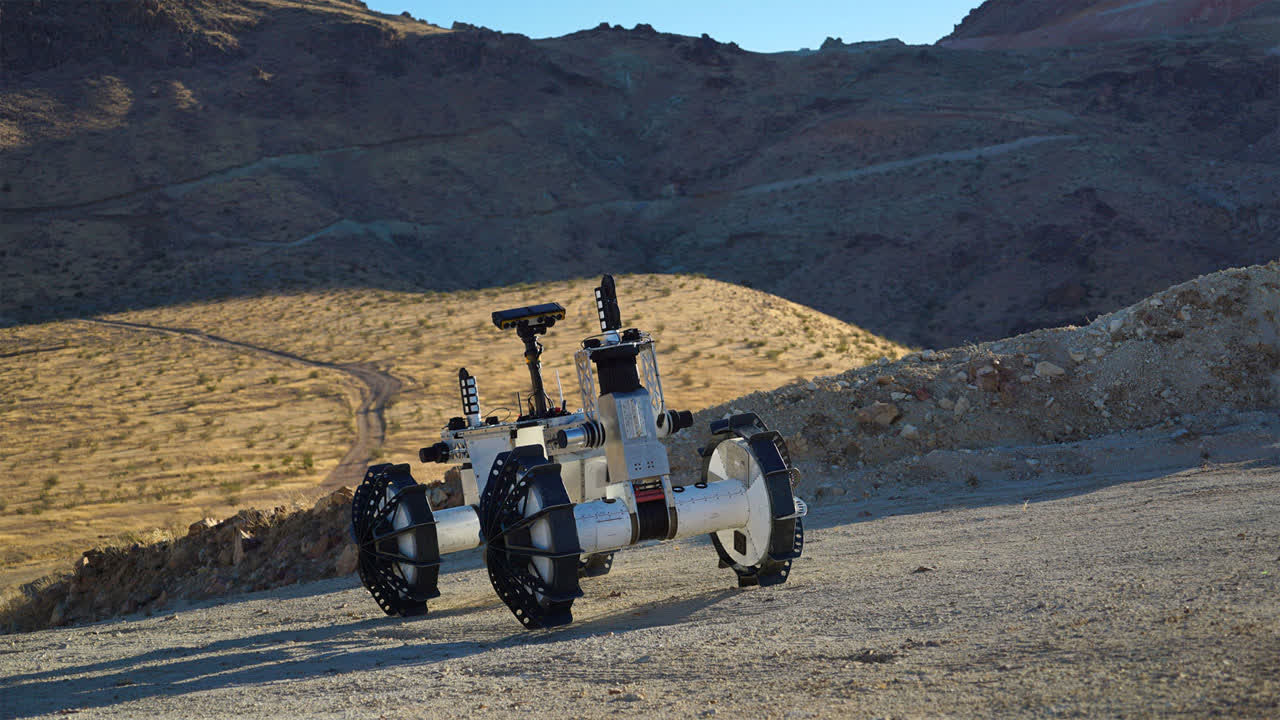In a nutshell: It could have made for an interesting entry into BattleBots or Robot Wars, but NASA's new DuAxel rover isn't wielding an axe or a flipper to fight other robots. What it does have though, is a pair of two-wheel axles and lots of scientific instruments onboard that potentially transform it into the ultimate planetary exploration machine.
Like off-road enthusiasts, NASA is also familiar with the challenges of driving in unusual, rocky terrain where the slightest miscalculation around a steep slope can risk the entire journey. While the help of a human hand can remedy such a risky situation on Earth, NASA doesn't get that luxury when it's controlling a rover millions of miles away from home on the surface of Mars.
To get around this problem, the space agency has been developing and testing a new versatile rover design that uses a pair of two-wheeled axles to cover long distances as a single vehicle that can then be split into two if it encounters a difficult obstacle on its way to a scientifically attractive location.
The two halves, both of which NASA calls the Axel, allows the DuAxel (short for dual-Axel) rover to navigate around extreme terrains by having its rear half anchored firmly in place, while the forward half can drive and explore the tough bits ahead. Both axles aren't completely detached as the front half is tethered to the main body for support, communication, and power.
Once the forward Axel reaches its target with camera-based mapping and navigation, it can autonomously deploy instruments tucked inside the wheel hubs for scientific analysis. The tether is then used to reel back in the forward Axel and dock it with the main rover, which can then drive off to a new exploration site.

NASA tested the DuAxel prototype in the Mojave Desert last fall and found that the rover performed "extremely well" in the field. It could now potentially be used to study crater slopes on Mars that are too steep for the agency's Curiosity rover as well as the soon-to-land Perseverance rover.
"DuAxel opens up access to more extreme terrain on planetary bodies such as the Moon, Mars, Mercury, and possibly some icy worlds, like Jupiter's moon Europa," said Issa Nesnas, a robotics technologist at NASA's JPL, whose team is now refining the prototype until one day it's ready to explore what previously had been inaccessible lands.
